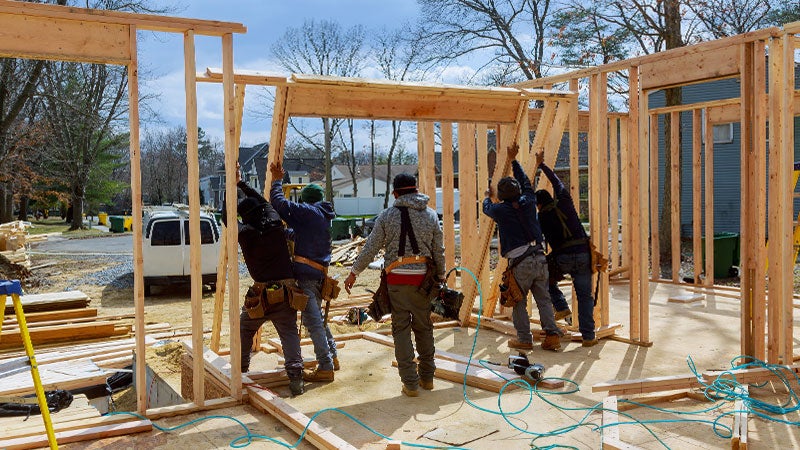
Your Ultimate Guide to Building a Thriving Football Fan Site
Football, the beautiful game, transcends borders and cultures, uniting billions in a shared passion. For many, this isn’t just a casual interest; it’s a way of life. If you’re one of these dedicated enthusiasts, you’ve likely spent countless hours discussing matches, dissecting tactics, and debating player performances. What if you could channel that passion into something tangible, something that connects you with fellow fans worldwide? Building your own football fan site is the answer.
This comprehensive guide will walk you through every essential step, from conceptualization to community building, ensuring you create a vibrant online hub for your shared love of the game.
Phase 1: The Blueprint – Planning Your Site’s Foundation
Before you dive into the technicalities, a solid plan is paramount. This initial phase defines your site’s identity and direction.
1. Define Your Niche: What’s Your Angle?
The world of football is vast. Trying to cover everything will spread you too thin and make it hard to stand out. Instead, identify your specific passion:
- Single Team Focus: Dedicate your site to your favorite club (e.g., "The Red Devils Forum," "Anfield Insider"). This allows for deep dives into team news, player analysis, transfer rumors, and fan culture specific to that club.
- League/Competition Specific: Focus on a particular league (e.g., "Premier League Tactics," "La Liga Lowdown") or competition (e.g., "Champions League Chronicles").
- General Football Analysis/Opinion: Offer broader tactical analysis, historical retrospectives, or opinion pieces on major footballing events worldwide.
- Fantasy Football/Betting: Cater to a specific sub-niche, providing tips, news, and community for fantasy league players or bettors.
- Youth Football/Grassroots: A niche often underserved, focusing on amateur leagues, youth academies, or local football.
Your niche will dictate your content, target audience, and overall tone. The more specific you are, the easier it is to attract a dedicated following.
2. Identify Your Target Audience:
Who are you trying to reach? Die-hard season ticket holders? Casual observers? Young fans just getting into the game? Knowing your audience helps tailor your language, content complexity, and engagement strategies.
3. Content Strategy: What Will You Offer?
Brainstorm the types of content that will populate your site. Aim for a mix of evergreen and timely pieces:
- News & Updates: Team news, injury reports, transfer rumors (with proper sourcing).
- Match Previews & Reviews: In-depth analysis before and after games.
- Tactical Analysis: Breakdowns of formations, player roles, and strategic decisions.
- Player Profiles & Stats: Detailed insights into individual players.
- Opinion & Editorials: Your unique take on current events, controversies, or long-standing debates.
- Historical Content: Retrospectives, famous matches, legendary players.
- Fan Stories & Interviews: Give a voice to your community.
- Polls & Quizzes: Interactive content to boost engagement.
- Multimedia: Photos, videos, infographics to enhance articles.
4. Competitive Analysis:
Look at existing football fan sites, both big and small, within your chosen niche. What do they do well? Where are their weaknesses? How can you differentiate yourself? What unique value can you provide?
5. Monetization Vision (Optional):
While passion is the primary driver, consider if you eventually want to monetize your site. Options include advertising (display ads, affiliate marketing), merchandise sales, premium content, or donations. This decision can influence design and content choices later on.
Phase 2: Laying the Foundation – Technical Setup
With your blueprint in hand, it’s time to build the digital infrastructure.
1. Domain Name: Your Site’s Identity
Choose a domain name that is:
- Memorable & Catchy: Easy to remember and type.
- Relevant: Reflects your niche (e.g., "ManUtdTactics.com," "FootballHistoryVault.net").
- Available: Use a domain registrar (e.g., Namecheap, GoDaddy) to check availability.
- Preferably .com: While other extensions exist, .com remains the most recognized and trusted.
2. Web Hosting: Your Site’s Home
Reliable hosting is crucial for speed and uptime. Consider:
- Shared Hosting: Most affordable, suitable for new sites with moderate traffic. (e.g., Bluehost, SiteGround, Hostinger)
- VPS Hosting (Virtual Private Server): More power and control than shared, good for growing sites.
- Dedicated Hosting: Highest performance and control, but most expensive, for very high-traffic sites.
- Managed WordPress Hosting: If you plan to use WordPress, these services optimize specifically for it (e.g., WP Engine, Kinsta).
Look for providers with good customer support, robust security, and a solid uptime guarantee.
3. Choosing Your Platform (CMS – Content Management System):
This is the software you’ll use to build and manage your website.
-
WordPress (Highly Recommended):
- Pros: Incredibly flexible, massive community support, vast array of themes (designs) and plugins (functionality), excellent for SEO, scalable. It powers over 40% of the internet.
- Cons: Requires some learning curve for beginners, needs regular updates (themes, plugins, core), security can be an issue if not managed properly.
- Ideal for: Almost anyone serious about building a professional, scalable fan site.
-
Website Builders (e.g., Wix, Squarespace, Weebly):
- Pros: Very easy to use, drag-and-drop interfaces, all-in-one solutions (hosting included), good for absolute beginners.
- Cons: Less control and flexibility, limited customization options, often harder to migrate away from, SEO capabilities can be restricted.
- Ideal for: Those who prioritize simplicity and speed over deep customization and long-term scalability.
-
Custom Development:
- Pros: Ultimate control, tailored exactly to your needs.
- Cons: Extremely expensive, time-consuming, requires professional developers.
- Ideal for: Large media companies or highly specialized projects with significant budgets.
For 99% of aspiring football fan site owners, WordPress.org (self-hosted WordPress) is the best choice.
4. Essential WordPress Plugins (if using WordPress):
- Yoast SEO / Rank Math: For search engine optimization.
- Wordfence Security / Sucuri Security: For website protection.
- WP Super Cache / LiteSpeed Cache: For website speed optimization.
- Akismet Anti-Spam: To combat comment spam.
- Contact Form 7 / WPForms: For creating contact forms.
- Social Sharing Plugins: To allow easy content sharing (e.g., AddToAny, ShareThis).
- bbPress / BuddyPress: If you plan to build a forum or social network directly on your site.
Phase 3: Crafting Engaging Content – The Heart of Your Site
Content is king. High-quality, original content is what will attract and retain visitors.
1. Quality Over Quantity:
Don’t just churn out articles. Focus on well-researched, accurate, and insightful pieces. Your unique voice and perspective will be your biggest asset. Proofread meticulously.
2. Diversify Content Formats:
Beyond articles, incorporate:
- Images & Graphics: Use high-quality, relevant images. Create custom infographics for stats or tactical breakdowns.
- Videos: Embed YouTube highlights, interviews, or create your own video analysis.
- Podcasts: If you enjoy speaking, a podcast can be a great way to deliver analysis and opinion.
- Interactive Elements: Polls, quizzes, predictions.
3. SEO Best Practices:
- Keyword Research: Identify terms fans are searching for (e.g., "Man Utd transfer news," "Premier League predictions").
- On-Page SEO: Optimize titles, headings, meta descriptions, and image alt text with keywords.
- Internal Linking: Link to other relevant articles on your site.
- Backlinks: Encourage other reputable sites to link to your content (a long-term strategy).
- Mobile-First Indexing: Ensure your site is fully responsive and performs well on mobile devices.
4. Maintain a Content Calendar:
Plan your content in advance. This helps maintain consistency, especially around match days, transfer windows, or major tournaments.
Phase 4: Building a Community – The Soul of Your Site
A fan site isn’t just about broadcasting information; it’s about fostering interaction.
1. Enable and Moderate Comments:
A robust comment section is vital. Use a good moderation system to keep discussions respectful and relevant. Respond to comments to show you value your readers.
2. Implement a Forum or Discussion Board:
For deeper, ongoing conversations, a dedicated forum (like bbPress for WordPress) allows fans to create topics, ask questions, and build lasting connections.
3. Integrate Social Media:
- Share Buttons: Make it easy for visitors to share your content on their social channels.
- Social Feeds: Display your latest social media posts on your site.
- Cross-Promotion: Actively promote your site content on platforms like Twitter, Facebook, Instagram, and Reddit. Engage with football communities there.
4. Encourage User-Generated Content:
Invite fans to submit their own opinion pieces, match reviews, fan art, or stories. Feature the best submissions. This empowers your community and provides fresh content.
5. Host Contests & Giveaways:
Football-related merchandise, signed memorabilia, or even simple digital badges can incentivize engagement and loyalty.
Phase 5: Design and User Experience (UX)
A well-designed site enhances readability and keeps visitors coming back.
1. Clean, Intuitive Layout:
Your site should be easy to navigate. Menus should be clear, and content should be logically organized. Avoid clutter.
2. Branding & Visual Identity:
Develop a consistent brand identity:
- Logo: A simple, memorable logo.
- Color Scheme: Choose colors that align with your niche (e.g., club colors) or evoke the excitement of football.
- Typography: Select readable fonts.
3. Mobile Responsiveness:
This is non-negotiable. Most users will access your site on mobile devices. Ensure your site looks and functions perfectly on smartphones and tablets.
4. Site Speed Optimization:
Slow loading times are a major turn-off. Optimize images, use caching plugins, and choose a fast hosting provider. Google also favors faster sites in search rankings.
Phase 6: Promotion and Growth
Once your site is live and populated with content, it’s time to get the word out.
1. Search Engine Optimization (SEO):
Continue to implement SEO best practices. It’s a long-term game, but crucial for organic traffic.
2. Social Media Marketing:
Actively engage on social media. Share your articles, interact with other football accounts, participate in relevant hashtags, and run targeted campaigns.
3. Email Marketing:
Build an email list by offering a newsletter. Send out regular updates, exclusive content, or early access to new features. This creates a direct line to your most engaged fans.
4. Guest Posting & Collaborations:
Write guest posts for other football blogs or collaborate with related content creators. This exposes your site to new audiences.
5. Online Football Communities:
Share your content on relevant subreddits, Facebook groups, or other online forums (but always respect community rules and avoid spamming).
6. Paid Advertising (Optional):
Consider targeted ads on social media or search engines if you have a budget, to reach specific demographics of football fans.
Phase 7: Maintenance and Evolution
A successful website is never truly "finished." It requires ongoing care and adaptation.
1. Regular Updates:
- Content: Keep your content fresh and timely.
- Software: Update WordPress core, themes, and plugins regularly for security and performance.
- Security: Implement strong passwords, use security plugins, and regularly back up your site.
2. Monitor Analytics:
Use tools like Google Analytics to track visitor numbers, popular content, traffic sources, and user behavior. This data is invaluable for understanding your audience and making informed decisions.
3. Listen to Your Community:
Pay attention to comments, forum discussions, and direct feedback. Your audience can provide valuable insights and ideas for new content or features.
4. Adapt and Innovate:
The digital landscape changes rapidly. Stay abreast of new technologies, content trends, and fan engagement strategies. Don’t be afraid to experiment with new formats or features.
Conclusion
Building a football fan site is a journey fueled by passion. It demands dedication, consistency, and a genuine love for the game. While the initial setup might seem daunting, breaking it down into manageable steps makes the process achievable.
Remember, success won’t happen overnight. It requires patience, continuous learning, and a commitment to providing value to your community. But the reward – connecting with fellow enthusiasts, fostering vibrant discussions, and creating a lasting online legacy for your shared love of football – is immeasurable. So, lace up your digital boots, get started, and build the ultimate online home for the beautiful game!



